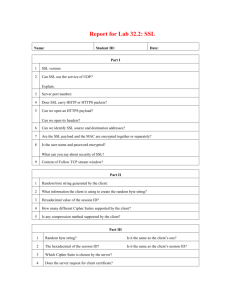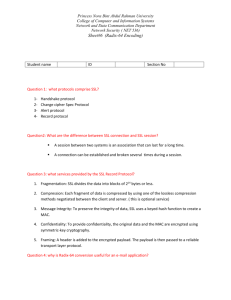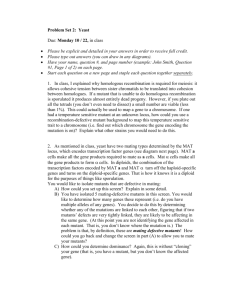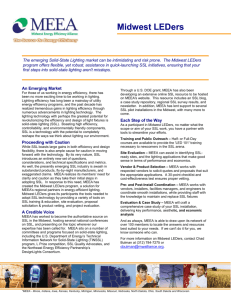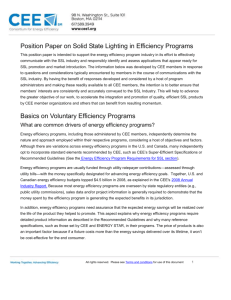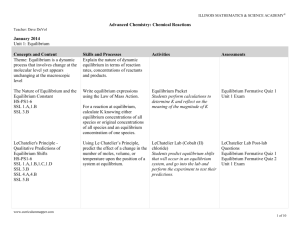SupplementalText
advertisement
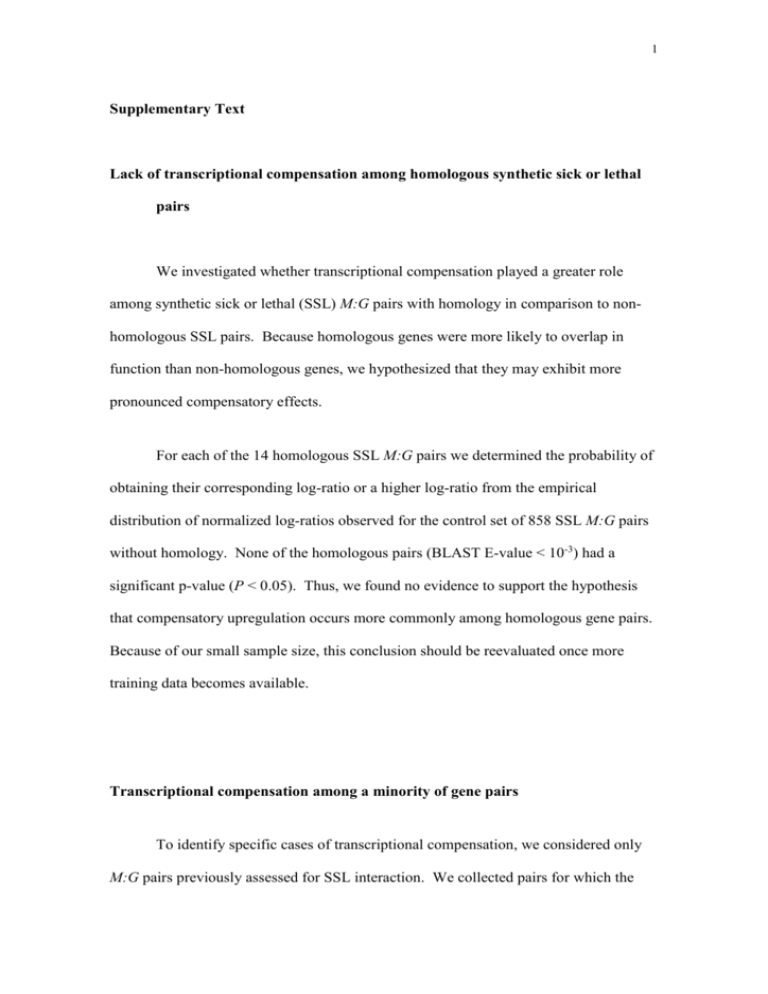
1 Supplementary Text Lack of transcriptional compensation among homologous synthetic sick or lethal pairs We investigated whether transcriptional compensation played a greater role among synthetic sick or lethal (SSL) M:G pairs with homology in comparison to nonhomologous SSL pairs. Because homologous genes were more likely to overlap in function than non-homologous genes, we hypothesized that they may exhibit more pronounced compensatory effects. For each of the 14 homologous SSL M:G pairs we determined the probability of obtaining their corresponding log-ratio or a higher log-ratio from the empirical distribution of normalized log-ratios observed for the control set of 858 SSL M:G pairs without homology. None of the homologous pairs (BLAST E-value < 10-3) had a significant p-value (P < 0.05). Thus, we found no evidence to support the hypothesis that compensatory upregulation occurs more commonly among homologous gene pairs. Because of our small sample size, this conclusion should be reevaluated once more training data becomes available. Transcriptional compensation among a minority of gene pairs To identify specific cases of transcriptional compensation, we considered only M:G pairs previously assessed for SSL interaction. We collected pairs for which the 2 expression of gene G was significantly changed in the null mutant of M. To determine if expression of a gene G was significantly changed a mutant M strain (relative to expression of G in a wildtype strain), we used a relatively strict p-value threshold, P = 0.001, because the reported p-values did not reflect a correction for testing multiple hypotheses (HUGHES et al. 2000). Among 872 SSL pairs, 1.6% (14) were significantly changed of which 93% (13/14) exhibited significant upregulation of G. As a control, among 112,686 non-SSL pairs, 0.39% (441) were significantly changed of which only 65% (287/441) exhibited upregulation of G (Supplementary Table 2). Therefore, among genes significantly changed in an M mutant, SSL partners of M were more likely than non-SSL partners to be transcriptionally upregulated (P = 0.02). Therefore, transcriptional compensation does play a role in maintaining robustness, but only for a minority of SSL pairs. The specific pairs we identified are listed in Table 1 of the main text. LITERATURE CITED HUGHES, T. R., M. J. MARTON, A. R. JONES, C. J. ROBERTS, R. STOUGHTON et al., 2000 Functional discovery via a compendium of expression profiles. Cell 102: 109126. 3 Supplementary Tables Supplementary Table 1. List of query genes used by both the expression and SSL interaction studies. Standard name, systematic name, SGD identification number, protein product, and description of gene. (see file: “wongSuppTable1.pdf”) Supplementary Table 2. M:G pairs in which expression of gene G is significantly changed in the null mutant of gene M. SSL non-SSL M:G pairs fraction of pairs with expression of G significantly changed among G genes with significantly changed expression, fraction upregulated 872 0.016 0.93 (13/14) 112686 0.0039 0.65 (287/441)



